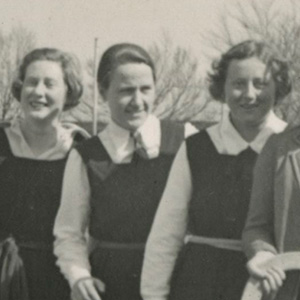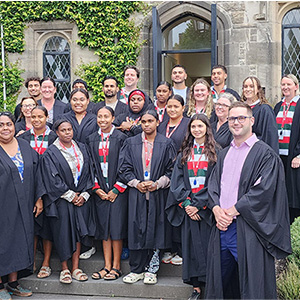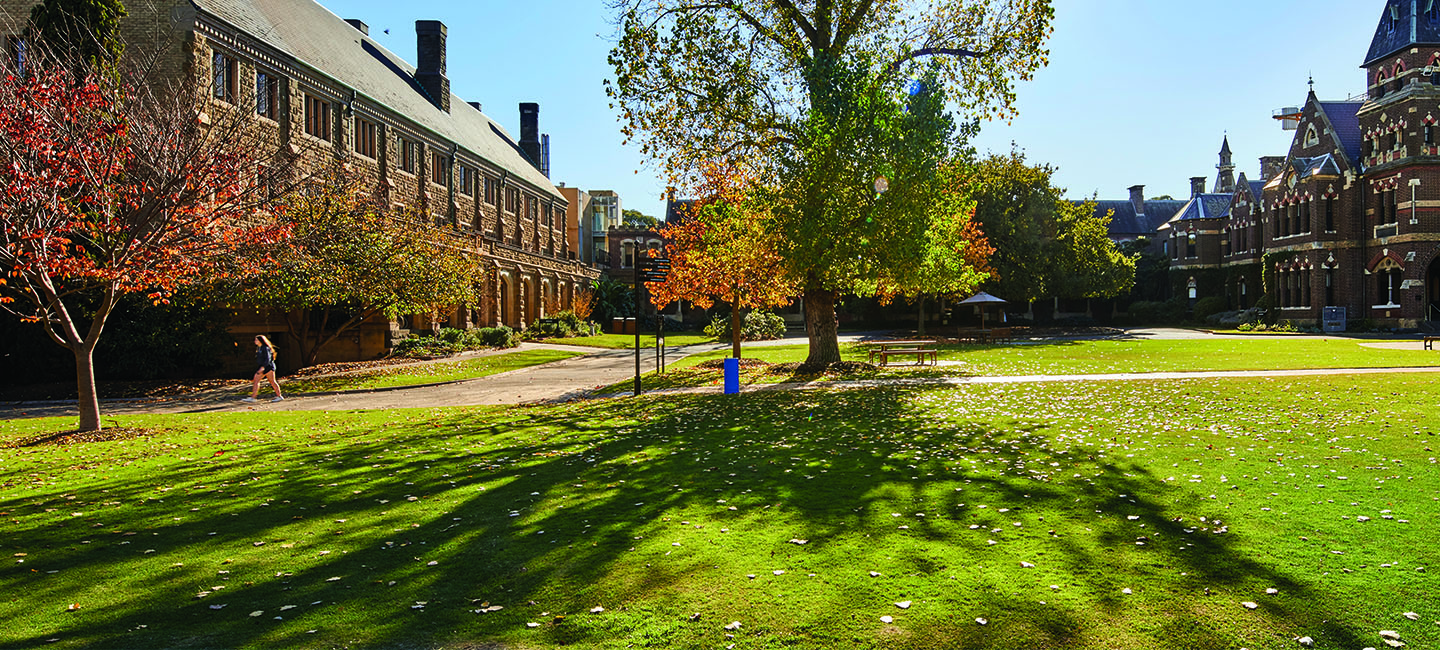

On a fine, clear afternoon on the 10 February 1870 – with a light wind blowing across the largely vacant grasslands north of the still fledgling University buildings – a crowd of several hundred spectators gathered to witness the laying of the foundation stone of Trinity, the first of the University of Melbourne-affiliated colleges.
‘Foundation stone’, however, was perhaps a slight misnomer. The walls of the college’s inaugural building, the Principal’s house, were already standing 10 feet tall. As it were, the committee overseeing the establishment of the college were so eager that construction had commenced before the Crown Grant of land had been formally issued.
The land north of the University of Melbourne had been set aside for affiliated colleges since 1861, but it was not until half a decade later that it was reserved from sale; still another five years before the Crown Grant was issued in November 1871 … almost 20 months after the foundation stone had been laid.
An aspirational vision for what the infant Trinity College was hoped to become was recorded, in Latin, and, along with the newspapers of the day and a few ‘coins of the realm’, it was entombed in a bottle (where it still resides) underneath the foundation stone.
The Trinity College vision
To the honour and glory of the highest God …
For the spread and support of the Christian religion …
For additions to every kind of sound learning …
For the education of youth in piety virtue and discipline
As well as in Humanities and Science
Speeches followed, some short, some long. Professor Wilson, one of the University’s founding four professors, mused on the purpose and intent behind the colleges and their relationship to the mother institution, as places of residence where that function was not otherwise supported within the University.
And indeed, this was not only a practical need, but almost a moral obligation. ‘What could be greater than the temptations which a young man of 20 or 21 would be subjected to, if he were living without superintendence in a city like Melbourne, at such an important epoch of his life?’ read a passage in the Argus newspaper in February 1870.
100 years later
On the centenary anniversary, 10 February 1970, under the fourth wardenship of Robin Sharwood, the scene was replayed anew with a garden reception held on the Vatican Lawn. His Excellency the Governor, Sir Rohan, and his wife, Lady Delacombe, attended, along with executives from the University of Melbourne and Anglican Church, including the Archbishop of Melbourne and President of Trinity’s Council, the Most Revd Frank Woods.
To recreate the scene of a century earlier, a Latin commemoration was read out and the scroll, various College documents, a newspaper and some coins were sealed in a jar and placed in a cavity next to the Leeper building by the Archbishop. A plate of Tasmanian granite inscribed in gilt ‘1870–1970’ still marks the location.
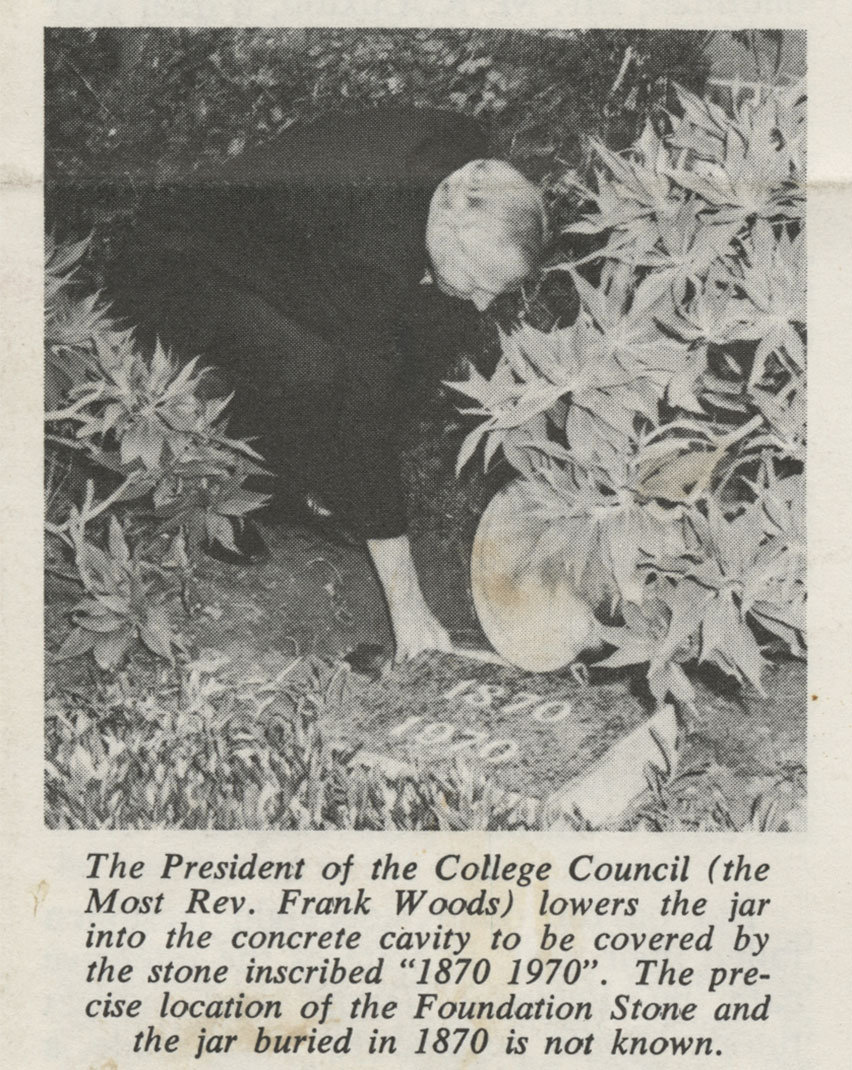
The second re-enactment
In 1997, at the 125th anniversary of the original foundation stone laying, the scene was once again re-enacted. The activities fell on Orientation Day, as a crowd gathered on the Vatican Lawn to watch a ‘performance’ of various Trinity figures and alumni, fulfilling, in period attire, the historical roles from 1870.
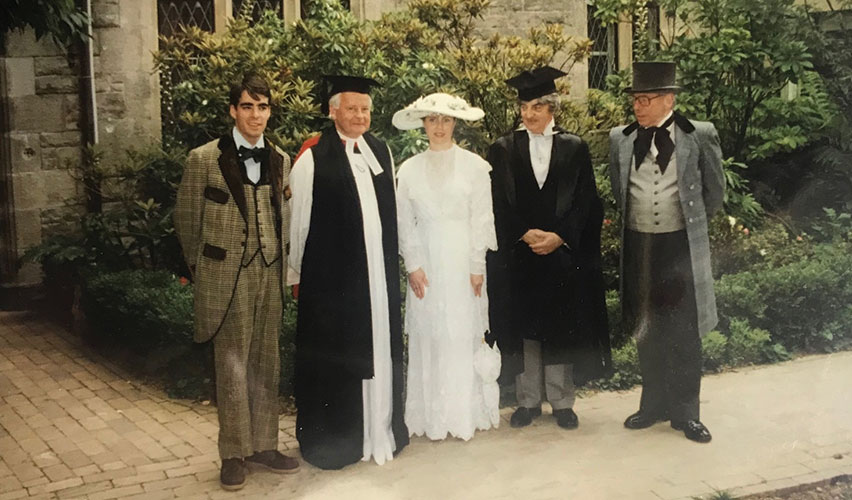
L-R: Senior Student Cameron Forbes, Canon Albert McPherson (TC 1965) in the role of Bishop Charles Perry, Lara Nicholls (TC 1986) as Mrs Francis Perry, Fourth Warden Prof Robin Sharwood as Prof William Wilson, and Clive Tadgell (TC 1957) as Chief Justice Sir William Stawell.
Reaching 150
And now, another quarter of a century gone, and we find ourselves at the auspicious moment of the 150th anniversary of Trinity’s founding, which will be celebrated as part of Trinity’s annual Drinks Under the Oak gathering. Much has changed, even in the last 25 years, let alone the preceding century and a half. Yet those core values, that vision for the sort of institution Trinity College would become – read out in Latin on that grassy Parkville summit all those years ago – ring as true today as they did then. As Trinity moves forward into the third decade of the 21st century, offering more opportunities than ever for students from around the world to benefit from a collegiate community and education, it has never been more true that our future successes stand upon the shoulders of a strong and rich history. Happy 150th Trinity.
Related News
-
News & Stories
- Our Theological School Student President's mission to champion a spiritual and welcoming environment
- Jack reaps the rewards after taking a leap of faith on Trinity College
- Trinity alum named in King's Birthday Honours 2025
- Trinity Deputy & Academic Dean appointed Fellow at Center of Theological Inquiry
- Meet Trinity's aspiring art curator Seb Moore
- Trinity College offers its congratulations to newly elected Archbishop of Melbourne, the Right Reve
- Events
- Art
- Music & Choir
- Campus Development Projects
- Visiting Scholars & Lectureships
- Accommodation for Visitors
- Short Programs
- Work at Trinity




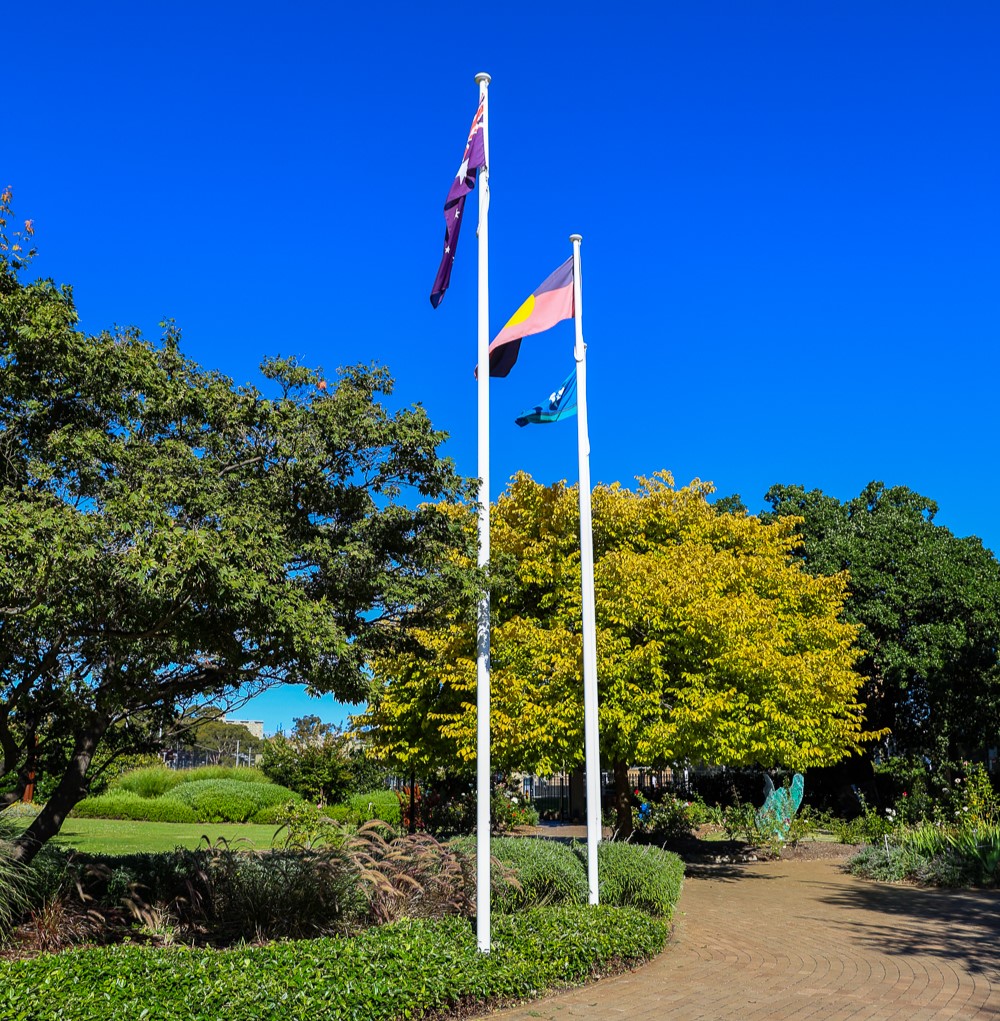
.jpg?width=300&height=300&ext=.jpg)
